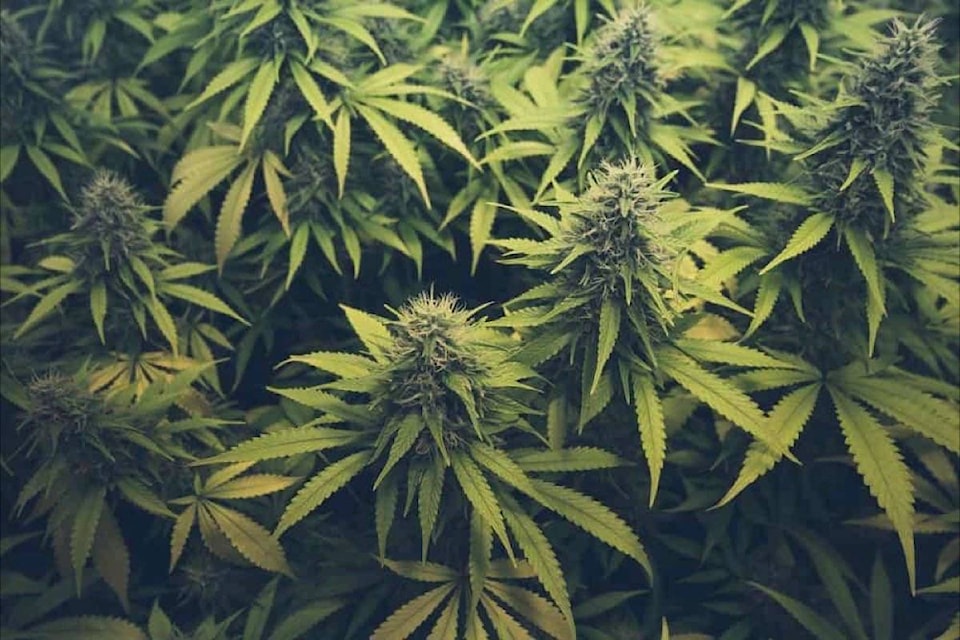The issue of the legal marijuana industry taking over existing greenhouses and productive agricultural land is coming to the fore, as the industry prepares for the Oct. 17 legalization of marijuana in Canada.
Langley Township Councillor Kim Richter, who is running for mayor in October’s municipal election (the vote takes place three days after the legalization takes effect), raised it at the Langley Township economic forum July 5. Retiring Delta Mayor Lois Jackson has also raised a number of concerns about the issue.
The Union of B.C. Municipalities has also issued a statement on the subject. It is calling for the provincial government to put a moratorium in place on the use of agricultural land for marijuana growing. While this would not affect existing operations, UBCM would like the moratorium to stay in place until the province has undertaken a comprehensive review and consulted with local governments.
The province has the ability to use Agricultural Land Commission regulations to restrict marijuana growing, although individual municipalities have limited power to restrict what takes place on agricultural land within the ALR.
Langley Township found that out in the late 1990s, when it attempted to restrict intensive mushroom composting due to smell and water quality concerns. Its powers to do so were severely limited by the provincial right to farm act.
On Friday (July 13), the province acted, stating that local and First Nations governments could act to prevent industrial-style production of marijuana on land within the Agricultural Land Reserve. However, they cannot stop marijuana from being grown legally in an open field, or within a soil-based structure, or in an existing licensed operation.
There has already been a noticeable impact from marijuana growing in Langley agricultural areas – even though it is not yet legal to grow cannabis for all purposes. Near the Aldergrove border crossing, Canopy Growth is growing medicinal marijuana in greenhouses on a 30-acre property. Neighbours have expressed many concerns about the smell, particularly as the weather has got warmer and the greenhouse vents are opened.
In a Facebook comment on a Black Press story, one neighbour said “The smell from this facility, which is only two-thirds full at the moment with approximately 200,000 plants is overwhelming. The stench invades your homes, carpets, upholstery. Our grandchildren don’t want to go outside because it stinks. We can’t enjoy our home (inside) or our property outside. It is migraine producing in its intensity.”
Those with experience in the greenhouse industry say it is very expensive to retrofit a greenhouse with scrubbers to deal with offensive odours. If a greenhouse is purpose-built to grow marijuana plants, the smell issue can be more easily addressed.
The Aldergrove greenhouses were formerly used to produce peppers. Canopy Growth is one of Canada’s largest marijuana companies, and took over the former Hershey factory in Smiths Fall, Ontario to grown medicinal marijuana. It is well-positioned to become a major producer for the general marijuana consumer.
The Canopy Growth experience illustrates one of the biggest challenges in making the transition to legal marijuana. It is a cash crop and producers will make a lot of money growing it. They will have steady customers in provincial liquor boards that, for the most part, will oversee the distribution of legal marijuana.
That in turn puts pressure on existing greenhouses and agricultural land, and pushes up land prices. Farmland prices in the Fraser Valley are already very high. All of this makes it hard for other farmers to compete for that scarce land.
At the economic forum, Richter asked keynote speaker, Jobs, Trade and Technology Minister Bruce Ralston, about marijuana growing within the ALR. Ralston replied that the provincial government is trying to encourage marijuana producers to set up operations in locations where land quality isn’t as good, and land prices are cheaper. However, it has no specific restrictions in place at present.
The matter will continue to be a subject of considerable debate. Chances are it will take some years before the impact of the industry is better understood.
Frank Bucholtz is a retired Langley Times editor. His opinions on subjects related to the South Fraser region can be found at bucholtz.blogspot.ca.
